Though we send brand invites for our annual Gear Test Week in February and have finalized submissions weeks before arriving at Powder Mountain, trends in a season’s lineup don’t become clear until well after the test. It’s only when us editors begin parsing through testers’ first impression scores, reading through forms and sifting through the compiled specs for every ski, boot and binding that a bigger picture emerges.
While years past have yielded a concentration of mid-range skis—the type that strive to be quiver killers—our latest test marked a shift toward ends of the spectrum. This doesn’t mean a loss of versatility but rather a slew of setups which cater to the preference of the person driving them. There are lightweight carvers which power through crud and playful, wide-yet-light chargeable skis; three-buckle, 130-flex, 2,500-gram boots and their freeride counterparts with a Boa, two buckles and a proprietary spine which allows surprising ROM; and 15-RV equivalent, 790-gram tech bindings and those whose tech toe can be replaced with a Pivot. The adventure is yours to choose. —Greta Close
Categories
Free Tour: The resort/touring crossover of your freeride dreams.
Metal, hardwood and rocker are the main ingredients of these sending sticks. They thrive in big terrain and variable conditions, but at a cost: They’re heavy.
Black Crows Draco Freebird
black-crows.com | $1,150 | 3,650g (175) | 136/110/125 | 175, 181, 189

“For those seeking a unicorn ski, this is it. A twin tip, freeride powder ski,” said a tester who has a high bar for unicorn sightings after more than 15 years of gear testing. A relatively unique twin tip design for a backcountry-oriented stick expectedly scored the Draco a 5/7 on playfulness but with a design process largely influenced by freeskiing madman Nikolai Schirmer, these birds begged to charge.
A straighter sidecut is best for long radius turns, per testers, and full ABS sidewall underfoot (capped in the tip and tail) lent even more stability. “Loves having a driver and is a fall line-oriented ski for advanced skiers,” said a tester with a reputation for straight lining. Even with freeride ambitions, the Draco keeps things light with a 70% paulownia/30% poplar core sandwiched by damping fiberglass sheets. The poplar is strategically placed in strips underfoot and along the length of the ski for damping and binding retention. The Draco’s “stable ride gave me confidence to charge through crud and pow,” said a blazing fast freeride coach who was equally stoked on their “light and nimble swing weight.”
If you’re not interested in emulating freeride world tour lines, the Draco’s moderate camber and short snow contact also allowed expert skiers to pivot and surf. “The Draco is slashy and quick despite its 110 waist,” said a freestyle oriented tester. Another tester who’s often picky extolled, “This ski will simply take care of you. It’ll hold you tight, let you play and surf you into a state of euphoria.”
“An absolute battleship. It requires serious commitment and a power boot to match but man is there a huge payoff. Crushes any conditions.”—Adam Howard
Völkl Blaze 104
volkl.com | $750 | 3,600g (179) | 143/104/128 | 158, 165, 172, 179, 186

A holy grail ski that does it all? The brand-new Blaze 104 comes pretty dang close, both floating through pow and confidently carving any size turns on packed snow. “Probably the most versatile ski on the market today,” enthused a soul shredder who knows the market well after 10 years at our Gear Test Week.
Replacing the 106 as the second-widest model in the Blaze line, the 104 earned plenty of props for its effortless turn initiation. The secret sauce: what Völkl calls 4 Radius Drive, and what an OG tester termed a “game changer.” The ski incorporates four different turn radii—at tip, front, underfoot and tail—to enhance each phase of a turn, from start to release. “This ski initiates whatever you’re thinking,” confirmed an 18-year-old racer with a high bar for turning performance.
The guts of the 104 include a sustainably sourced tip-to-tail poplar/beech core and a thin layer of titanal underfoot to provide stability without compromising liveliness. Like all skis in the Blaze line, the 104 has a rockered tip and tail (with shock-absorbing thermoplastic polyurethane inserts), and their width helps deliver float that had an easygoing tester “grinning ear to ear down my first pow run of the day.”
If you’re looking for a single-quiver ski, this might be your perfect match. “It’s crazy how broad a range of people this ski will cater to,” said the OG tester, echoing others who found the ski a solid charger yet forgiving enough to appeal to a range of skiers. Summed up another fan: “The Blaze 104 just makes you smile.”
“The Blaze 104 will never let you down. It handles any snow condition like a boss.” —Bria McCurdy
Black Diamond Equipment Impulse 98 Ti
blackdiamondequipment.com | $800 | 3,580g (182) | 132/98/119 | 175, 182, 189

The new Impulse Ti might look like the Impulse skis of previous years, but under their bright topsheets there’s something new. As the name implies, a sheet of Titanal runs the length of these planks with the goal being, according to Black Diamond, to increase stability while maintaining off-piste performance without adding weight.
In order to not overpower the playful poplar core and beech stringers, Black Diamond added just one piece of Titanal. Additional materials include damping elastomer layers and stiffening prepreg (more like double stick tape than the traditional wet resin) fiberglass. This year’s model has a reduced amount of fiberglass, shaving 20 grams off the weight despite the metal. Per an East Coast freeskier, “It was super easy to put on edge on a groomer and it floated through the pow.” Playful yet stable? Check. No additional weight? Check.
Still, these aren’t an uphill machine. Even strong legged testers placed the Impulse 98 Ti in the 50/50 resort/touring category. With a full ABS sidewall, long camber pocket and moderate rise in the tip and tail complimenting the Titanal sheet, these sticks had no problem jumping from groomers to shallow powder to chop. For more versatility, Black Diamond offers two mounting points: one traditional (better for carving) and one progressive, which is one centimeter forward (better for quick turns).
“Insane consistency in a variety of conditions,” quipped a racer turned big mountain skier who used the back mount. A Vermonter on the progressive line added, “The radius on these skis allowed them to make big turns but they were also still able to be quick and snappy between trees.”
“Sidecountry 50/50 with a strong boot. These soul sticks will keep you shredding till last call.” —Ian Halderman
WNDR Alpine Vital 98
wndr-alpine.com | $899 | 3,550g (183) | 126/98/117 | 159, 165, 171, 177, 183, 189

“The WNDR Vitals felt like the Taylor Swift of Gear Test,” quipped a dedicated Swifty. “They spanned genres and suited a broad audience. The opposite of a one-hit wonder, these skis kept giving lap after lap.”
The Vital comes in a camber and a reverse camber profile. Other than the snow contact length underfoot, both options share the same tech, most prominent of which is the bio-based algae components. Algal stringers are poured over an aspen core, all of which bonds sans resin with the algal sidewall (also poured). Where resin is needed, WNDR uses their Super Sap, a petroleum-free alternative. It can be found holding the repurposed production waste together in the SpiralMade binding retention plate.
It’s no surprise that the Camber version “rails like a train,” per a Front Range ripper, while the Reverse version was called “extremely fun and playful” by his Tahoe counterpart. But each model performed outside of its element. The Camber still popped, and the Reverse could hold an edge. “Not just good for the planet,” said a former ski racer who was unexpectedly drawn to the Reverse. “They also rip.”
The medium stiff tail hardens underfoot before gradually softening in the tip, leading to top marks in versatility, powder and crud performance. “Even as conditions change with variable snow, it holds steady, easy to drive without getting tossed or chattering,” said a small tester who often finds herself being bucked in chunder. While advanced and intermediate skiers gravitated towards the Vital, one tester said, “It will take care of any skier ability in any conditions in and out of bounds.”
“Built for days when you don’t know exactly what you’re getting into. They are super versatile and are confidence inspiring in a wide range of conditions.” —Jocelyn Cuthbert
Salomon QST Echo
salomon.com | $800 | 3,520g (181) | 139/106/126 | 157, 165, 173, 181, 189

“These skis fucking rip,” exclaimed an East Coast tester of Salomon’s second year Editors’ Choice QST Echo. Returning unchanged for the ’24/25 season, the Echo reflects the collaboration with Cody Townsend which drove the design of this, in the words of a tester, “backcountry tool.”
A light but strong karuba/poplar core lined with strengthening basalt fibers make this mid-fat ski “the standard for light ski backcountry performance,” according to an I-70 shredder. Cork in the tip and tail, a hallmark of the QST line, keeps the Echo damp, but unlike its heavier linemates (the Echo is 200 grams lighter per pair than the QST 106), the Echo does away with a metal mounting plate replacing that heavier reinforcement with cleverly placed karuba stringers which lineup with binding screws. On snow, recycled double sidewalls aid in power transfer and edge hold while the ski’s 6/7 score in playfulness comes from the generous tip rocker with slightly less in the tail and a shorter, well-cambered pocket underfoot. The result is “a great all mountain ski,” according to one young hip dragger. “It’s fun in powder, it plows through crud, and it can hold an edge on groomers at high speeds.”
A Vermont-raised tester and former patroller recognized the Echo’s shortcomings, saying, “When chop or bumps happen, beware,” he was impressed overall with the “lightweight, go anywhere package.” From the sidecountry to longer skintracks, the Echo proved intuitive, sporting “enough junk in the trunk to take down bigger, more committing lines,” said a tester who seeks out such lines. Many recommended the Echo for the more experienced skier. If that’s you, per a Teton dad-jibber, “this ski is the pick for a one-ski quiver: a do all everyday touring setup.”
“Smooth as BUTTAH! Lather this on any type of bready, crusty, dinner roll, it goes!” —Kelsey Colbert
Stereo Lynx MK5
stereoskis.com | $1,050 | 3,220g (186) | 130/100/118 | 170, 178, 186

These elusive felines garnered praise for meeting an equally elusive goal. “Performs like a race ski but light enough for any backcountry mission,” an often picky tester enthused. “The Stereo Lynx was the best sport touring ski at the test,” said another with over a decade of experience. “Best ski I’ve been on in years!” agreed a Coloradan who’s been gracing our last 13 tests.
Stereo achieves this performance balance with a karuba and poplar core, carbon stringer and prepreg, triaxial fiberglass layup. The multi-directional fiberglass is meant to increase torsional rigidity and the prepreg construction reduces wet material and therefore weight. Each layer is pressed together in a Swedish factory that runs on 100% renewable energy, per the brand. Adding to the light but stable construction is a sandwich sidewall that’s capped in the tip and tail. The resulting ski scored a 6/7 in versatility and dampness and “rips harder than a stoner in Boulder, Colorado,” per a hard-charging tester. “Prefers to go fast and incredibly stable at speed.”
Elliptical tip rocker, a touch of camber and slight tail rocker mean these cats aren’t pigeonholed to big turns at speed. “These are amazingly nimble, even in larger sizes. They can make any turn shape or size,” a Front Range ripper praised. Criticism for the Lynx was hard to come by. The only downside testers nitpicked was on the deepest of days, with one aspiring mountaineer saying the Lynx is for “any condition you’d reasonably find when touring—cuz pow is a myth.”
“Big days, small days, yummy days. Uphill ease meets downhill pizzaz. So. Much. Yum.” —Alex Paul
Sport Tour: A versatile backcountry option for the everyday skier
These options toe the line between uphill and downhill performance, often achieved with high-tech fibers, specially milled wood and a meld of sidewall constructions.
Voilé Charger Ace
voile.com | $995 | 3,182g (178) | 140/106/124 | 157, 164, 171, 178, 185

In order to pull an EC for the Charger Ace two years in a row, Voilé stacked the deck. Meaning, they kept their usual approachable and playful profile, but beefed it up with a freeride oriented core. “I’ve spent so many backcountry days on Voilé, it’s awesome they’re extending their range,” said one tester who has been on the Charger line since it came out in 2011.
The secret to this ski is balance. The early rise tip, minimal taper, long camber pocket and 20-meter turning radius balance pop and stability. Inside the ski, the construction balances weight and drivability. Two sheets of carbon and fiberglass sandwich a paulownia core, which is inlaid with a maple mounting plate underfoot. While the denser wood adds weight, it works with half capped sidewalls to up hard snow performance. “The sidewall edge hold and damping improve the hard snow capabilities while the tried-and-true Voilé shape plays with the soft snow,” said a ski mountaineer. A freeride coach raved, “Don’t be fooled by the lightness of this beefy skiing floater. Put on a light and supportive boot and reap the rewards of free touring power in a light setup.”
The results yielded praise from a variety of testers. Those pushing 200 pounds found them best for railing wide turns, while short testers favored small radius turns. According to one veteran tester, “This is for any intermediate to advanced skier with a nuanced understanding and appreciation of the relationship between supple response and assertive drive.”
“The old cliché of a one ski quiver has never been more true. These skis have boundless energy, responsiveness and feedback like a high-performance race car. Lightweight and damp, performs equally well on hardpack or powder. This ski literally does it all.” —Damian Riddle
Atomic Backland 109
atomic.com | $975 | 3,080g (184) | 135/109.5/124 | 176, 184, 189

After years of slight tweaks, Atomic decided to overhaul this multiyear Editors’ Choice ski. Enter the newly minted Backland 109, which keeps the weight down while adding a more aggressive freeride twist. Or, as one tester put it, “The Ford Ranger has been updated to an F-150.”
Atomic reduced the amount of fiberglass under the recycled topsheet and thickened the poplar and karuba in the core. The result is a lower carbon footprint, lower weight and, according to testers, better flex pattern. “More wood and less fiberglass improve suspension,” said a Teton ripper. The HRZN Tech Tip keeps it’s boat-hull shape (10% more surface area than a flat tip) and now has small cutouts near the edge to reduce weight even more. “It improves swing weight,” said that same tester. When it came to variable terrain, the core and tip join the new profile (less camber, more tail rocker) for a versatile performance. “Although it excels in soft, clean snow, it’ll hold its own in crud and chop,” explained a freeride athlete.
Heavier testers preferred the new design. “More tail rocker than the previous generations, which allows the ski to slash out of turns quicker,” said a 200-pound carver. His weight classmate added, “Nice, rounded flex that accommodates a wide range of turning shapes. Releases cleanly through the turn. Poppy.” Smaller testers struggled, with one saying, “Sluggish to turn unless you’re going fast.” But for those with strong legs, our Teton ripper explained, “It might just make critics of the previous version’s lack of tip strength reevaluate this ski entirely.”
“Intuitive ski that can seek out creative lines. Ample buoyance in powder. Softer, more rockered tail allowed for slashing turns and checking speed.” —Damian Riddle
Fischer Transalp 105 CTI
fischersports.com | $950 | 3,060g (178)| 139/105/124 | 164, 171, 178, 185

“Much like the topsheet, this ski is elegant, consistent and good clean fun. But make no mistake, it’s got that dawg in them,” said one tester, who would “100% let this ski date my daughter.”
What makes the Transalp 105 CTI marriage material? Perhaps it’s the Air Tec core. According to Fischer, the special milling pattern in the paulownia core reduces weight by 25% without sacrificing stability. Someone’s daughter agreed, saying, “Lightweight, yet torsionally stiff.” While heavier skiers were a fan of the strong backbone, thanks to carbon stringers and the hourglass shaped, 0.5-millimeter Titanal mounting plate, she noted, “They can be a bit chattery in harder snow.” The Transalp might be a casual fling for her, but her own daughter—a decorated ski racer—disagreed: “Not too heavy, but heavy enough not to chatter. It has the perfect amount of stiffness.”
Testers agreed that the Transalp belongs with someone who can put the vertical sidewalls on edge. “Different tip from other brands,” said one of the long camber pocket, nearly flat tail and low tip rise. The design is borrowed from the freeride oriented Ranger series and reminiscent of the traditional profile of skis past, meaning it needs to be driven by “someone who can press the front of a boot,” explained a tester with an upright stance.
While the traditional profile sacrificed pop in powder, the dampness and stability made up for it in crud and hardpack performance. “An all-mountain ski. Perfect for any conditions and can be used on East or West Coast,” summarized our ski racer, who will be introducing this ski to her parents.
“Formula 1 car. Tuned. Fast. Dependable and one hell of a ride. Cult favorite in chop.” —Jon Lange
DPS Carbon Pagoda Tour CFL 112
dpsskis.com | $1,695 | 3,020g (178) | 140/112/125 | 158, 168, 178, 184, 189

“Built for touring pow, first and foremost, and they handle crud, tracks and firm snow surprisingly well due to the waist width and big tip rocker,” said a tester who often tends towards skinny skis of these wide sticks. “Super fun! Damp enough to charge but quick enough to wiggle in the tightest trees,” raved a former racer.
Sure, the Carbon Pagoda Tour CFL 112’s ample profile signals that it floats well in deep snow. But there’s more than meets the eye. A paulownia core helps lighten the load. And the ski benefits from DPS’s new carbon and flax laminate, which per the brand, gives torsional stability. Agreed an astute tester who skis with an upright stance, “The new laminate is very lightweight and adds structure to the core, helping to provide stability in deep snow.” She also called the ski “forgiving and easy to maneuver.” Stated another tester, “Perfect for a powder hound who wants to prioritize float and lightness but not fear for their life in crud.”
For such a relatively wide ski underfoot, the 112 is surprisingly nimble, thanks to its generous rocker and 15-meter turn radius. “This ski reacts like an all-mountain slalom ski,” said one happy Vermonter. Chimed in the ex-racer, “So much tip rocker and 15-meter radius make this 112 underfoot turn like a 56 racing ski.” One lightweight tester recommended pairing the ski with a stiff boot for extra control; then “they’ll cruise the hardpack effortlessly,” she added. Overall, as one powder hound extolled, “This ski is built to be grabbed when Ullr delivers.”
“Your new favorite touring partner that won’t let you down no matter the conditions.” —Maria Riek
Rossignol Escaper 105 Nano
rossignol.com | $800 | 2,600g (169) | 126/97/116 | 161, 169, 177, 185

“A really fun and predictable ski to enjoy a wide variety of terrain and conditions with,” said an all-mountain shredder. “I would suggest it to someone who is looking for a playful all-mountain ski that can handle most terrain,” echoed another.
A light poplar core (30% lighter than regular poplar, per Rossignol) and a thin nano top sheet shave grams off this ski. “One of the lighter skis in the sport touring category,” said a Tahoean familiar with the type. Plus, Rossignol’s Aero Profile (the brand’s proprietary top sheet profile) reduces swing weight for more maneuverability, per the brand, and testers appreciated the ski’s easy turnability, enhanced by the almost-flat tails. The Escaper 105 Nano is a great pick for “someone wanting to wiggle down some dad pow and save weight while doing it,” said a Montanan charger. Another tester thought the ski excelled at medium- to long-radius turns, commenting that the “vertical sidewalls allow the edge to respond well to direct pressure for quick response.”
A nano basalt layer and nano titanal underfoot add shock absorption, says Rossignol, but a few testers quibbled with the ski’s stability. One 6-foot-tall Coloradan who said “the weight to dampness [ratio] is shocking” also found the ski “a bit reactive in crud.” But overall, as another Centenial State resident put it, “If you like a consistent soul turn ride on a Rossi vibe, this is it.”
“Light, stable and predictable, the Escaper 105 delivers in typical Rossi fashion.” —Darren Padgett
Black Diamond Equipment Helio Carbon 104
blackdiamondequipment.com | $950 | 2,760g (172) | 131/104/118 | 160, 166, 172, 178, 184

The Helio Carbon returns to the Editors’ Choice rostrum, this time in the 104-waisted model. Why did this option beat out its narrower siblings? “This ski is for the folks who go out in all conditions and any terrain,” said a tester who has sampled every iteration since the Helio hit the market.
Versatility is achieved with a clever carbon cocktail. A paulownia core is inlaid with carbon stringers. To keep weight down while adding stiffness, Black Diamond employs a prepreg (a sheet preloaded with dry glue) carbon overlay. Since carbon can be chattery, they also added pieces of damping elastomer between the various layers. “Really great lightweight carver,” assessed a PNW volcano skier.
The layup pairs with a profile designed for soft snow: moderate tip and tail rise, a long camber pocket, generous taper and full ABS sidewalls. “A fine balance of materials and construction. Nice job, BD!” quipped a tall, tech-minded tester. “These skis prefer long turns and can feel sort of dead at slower speeds,” one Montanan remarked, but he added, “Overall fun and versatile for many skier types,” and still awarded the Helio Carbon 104 a 5/7 overall. One of his fellow statesman concluded, “The Helio 104’s tip rocker and 104 waist float new dumps of powder easily. The rounded tails help make crud more manageable but more tail rise would help with breakable crust.”
“The Helio 104 Carbon is a perfect powder touring ski for either side of the country but favoring the deep snow in the West.” —Lance Riek
Speed Tour: The überlight gear best for Type III fun.
Skinny skis and no-buckle boots dominate this minimalist category which is just as at home on the skintrack as it is in your local skimo race.
Voilé Endeavor
voile.com | $750 | 2,951g (178) | 117/84/102 | 157, 164, 171, 178, 184

Cue the Mission Impossible soundtrack. According to one tester who does all her own stunts, the Voilé Endeavor is “a must have for those who want their adventures to feel like a starring role in their own action-packed movie.”
Despite the narrow waist, the Endeavor clocks in as one of the heavier speed touring options. But heavy is a relative term in this category. “Light, nimble, sporty rando wanna be that you’d own and probably put a lot of days on,” said a Vermonter. The poplar core is stiffened by triaxial fiberglass above and a carbon laminate below. Capped sidewalls are designed to balance edge hold and weight. The rocker profile—the same early tip rise and camber pocket as Voilé’s freeride Charger Ace—surprised testers with playfulness. “Enough camber underfoot and a wood core give this plenty of pop out of the turn,” summarized a tester who prefers a high edge angle. “The turn initiation is smooth and snappy,” said a Montanan who gravitates toward skinny skis. “The stiffness gives confidence in whatever situation you find yourself in.”
As for the Endeavor’s purpose, it unsurprisingly scored best for hard snow performance, but it’s no slouch in crud and some boot top pow. “Rails hard snow and corn, surfs powder to a point,” said one tester. While a 19.5-meter turning radius suggests this would be for the GS minded, a California carver explained, “The minimal taper does not negatively impact the turning performance of this ski. It’s incredibly well rounded for its weight.”
“Imagine a ski that’s your wingman both up and down the hill. Joyful and utterly fabulous.” —Lindsay McLeod
Head Crux 87 Pro
head.com | $800 | 2,440g (177) | 126/87/108 | 149, 156, 163, 170, 177, 184

Every consequential line has its crux and when Head set out to develop their first touring-specific line of skis, it was with just that in mind. The second narrowest ski in the line, the Crux 87 Pro, embodies that intention, blending the line’s lightweight technology with a sveldt waist. The result is, in the words of one seasoned Tahoe tester, “a perfect ski for a long walk in the high country.”
Head does away with a traditional topsheet, opting instead for a clear polyester fleece which leaves the triaxial carbon jacket, a staple of the Crux line, exposed. “Beautiful,” said a Montanan of the visible crosshatched weave which gives the Crux 87 Pro strength and torsional rigidity at a light weight. Incorporated graphene and fiberglass—all sandwiching a precision milled karuba core—make the ski damp. “Confidence inspiring, super stable at speed, quick edge to edge with no tip chatter and ripped through chop well,” said a Wasatch based charger.
A traditional sidecut with minimal tip and tail rocker and a low, long camber pocket make the Crux Pro 87 want to lay out long turns. “The ski can hold an edge,” our Montana tester praised; “serious trench town action,” echoed a Vermonter. Described by said East Coaster as “The perfect Haute Route ski,” the Crux 87 Pro thrived in corn, but still managed chop and chewed up groomers well. “Remarkably stable making long arcs at speed or quick swivel turns in the flats,” a longtime Tahoe tester said, all while being so light she could barely feel them underfoot.
“These lively lightweight skis are just the ticket for a backcountry skier looking to spend most of their time in the backcountry and still finish the day in bounds without killing themselves.” —Maria Riek
Salomon MTN 86 Carbon
salomon.com | $700 | 2,300g (172) | 120/86/106 | 148, 156, 164, 172, 180

“If you’re going to run uphill, you might as well enjoy the down,” a Salt Lake City skintrack crusher (and our Gear Test Week sock-off champion) said. She found herself doing just that on the Salomon MTN 86 Carbon. “Really fun skis for how light they are,” she praised, “while also being able to cruise down windboard and corn and actually ripping a turn.”
From the inside out, a lightweight karuba core is reinforced with new-this-year carbon in the ski’s backbone to give the MTN 86 Carbon its remarkably sturdy on-snow feel. Paired with damping cork in the tip—offering lightweight, high level vibration absorption—this skinny ski battles chatter. “Surprisingly damp for their weight,” one Vermont tester said. “Fast and firm has met its best friend,” said another, who is all too familiar with such conditions.
A Bozeman-based, mullet-sporting tester called these skis “snappy and quick”—characteristics facilitated by a lightly rockered tip and tail and a cambered pocket underfoot. “Poppy, so fun,” echoed an older, mullet-less Vermonter. One Tahoe ripper did find these skis “almost too soft,” but for the most part she was impressed with their carvability, which is bolstered by a Titanal binding insert, compared to other skis in the same category. This skiability sets the MTN 86 Carbon apart. In other words, “Built for skimo racers who want to still have a good time skiing down!” quipped the Wasatch baddass.
“Running up the mountain like a nimble mountain goat on the ascent and a roaring lion on the lightning fast, rock solid descents.” —Lindsey MacLeod
Published here is one of 56 Editors’ Choice reviews in our 2025 Gear Guide. To check out the comprehensive range backcountry gear we reviewed, pick up a copy of the 2025 Gear Guide, available in print and PDF versions.
*Affiliate link disclaimer:
At Backcountry Magazine, we are committed to providing you with honest and informative gear coverage. To support our work and continue delivering quality content, we are including affiliate links in our reviews. Partnerships with retailers are separate from coverage, ensuring that our reviews remain unbiased. These links help us earn a small commission if you make a purchase through them, at no additional cost to you.



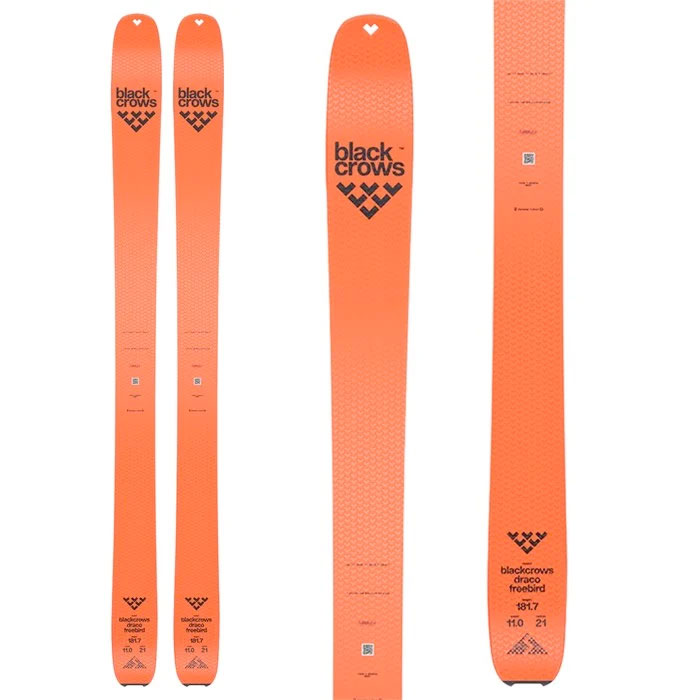

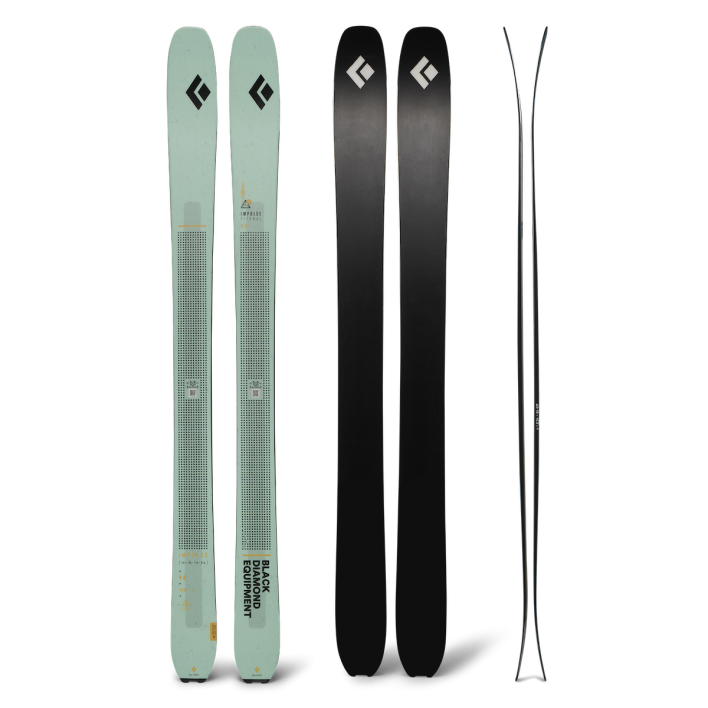

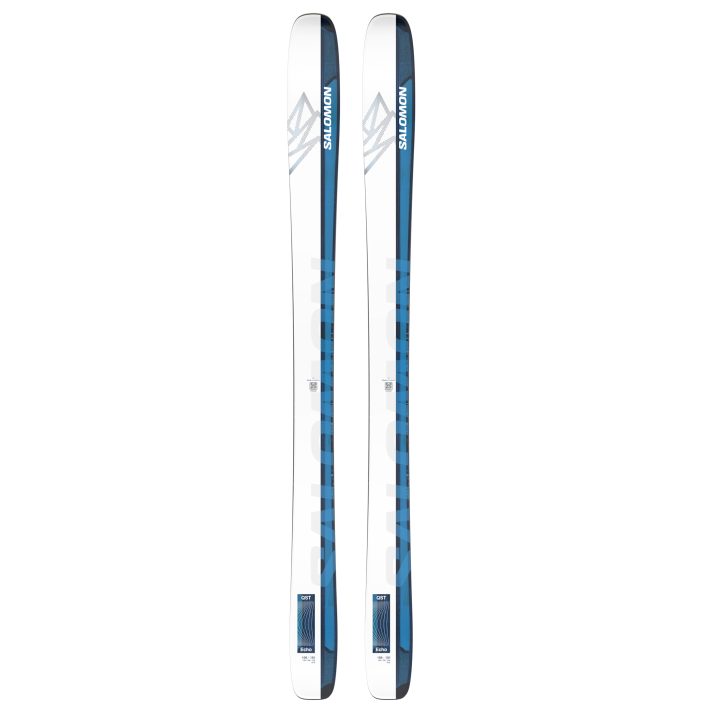

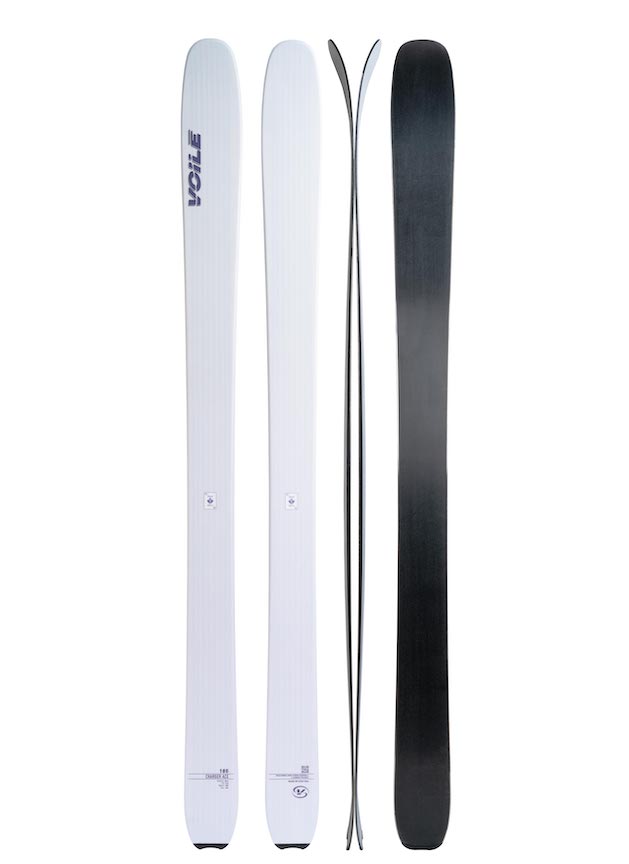


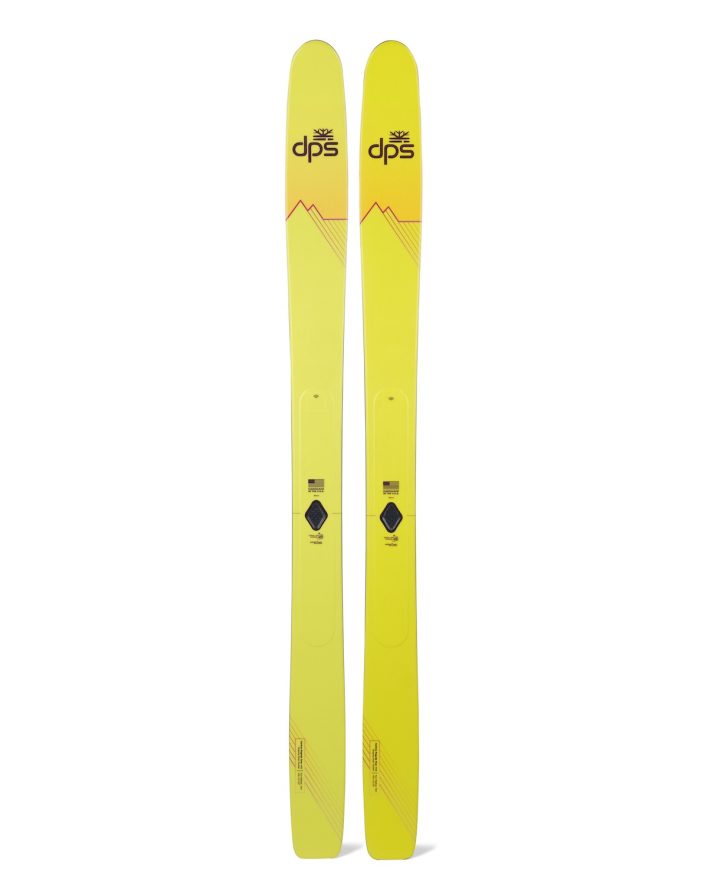

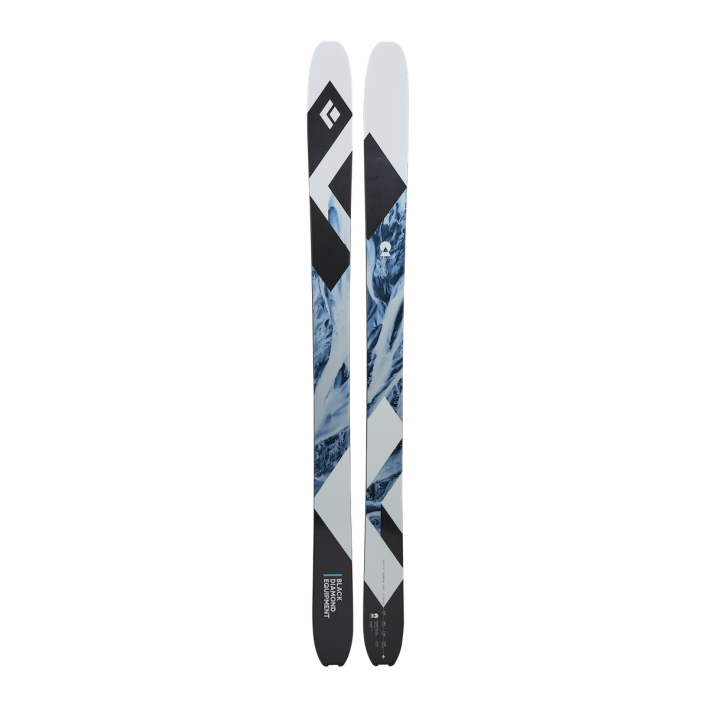
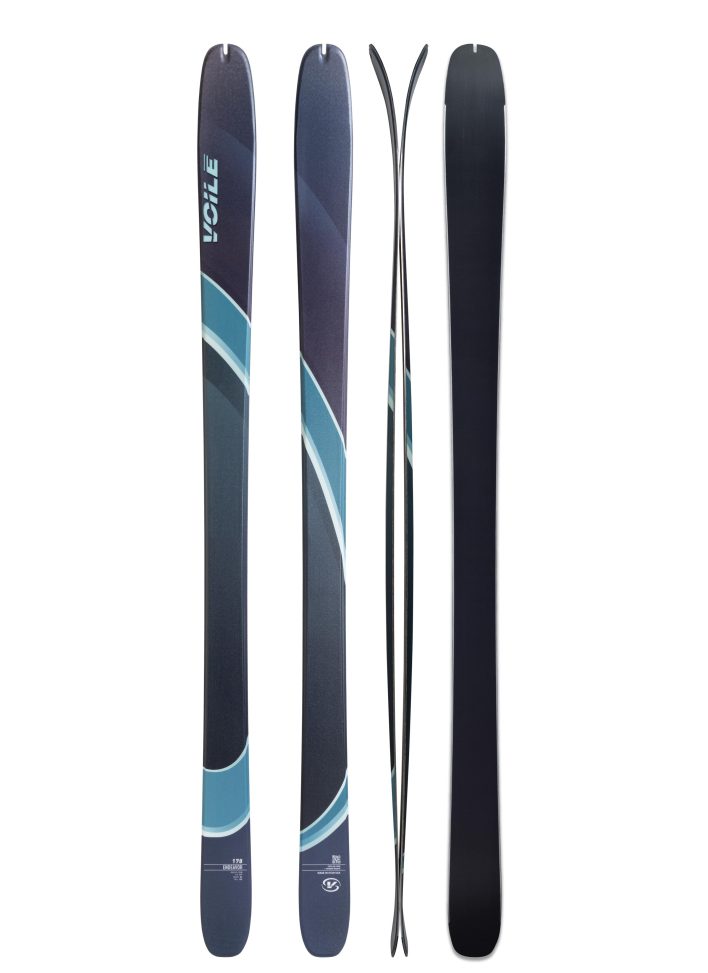

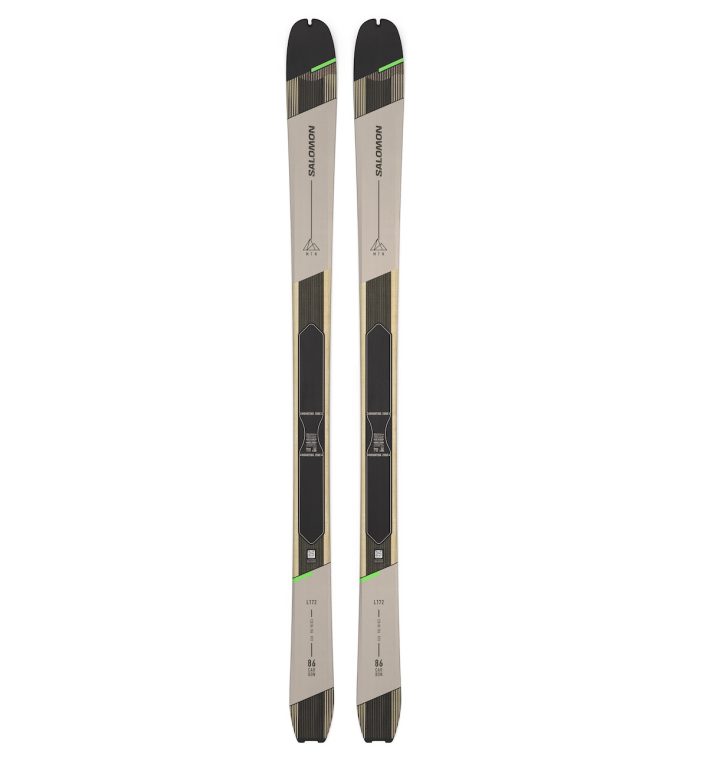







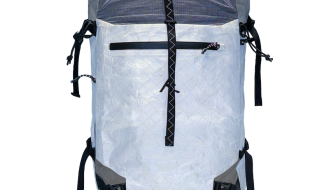

I bought Völkl Blaze 104 this year and I am more than happy with them. They ride great and I don’t intend to change them
Thanks very much for such a great post, well learned and helpful, ready to recommend our future guests.